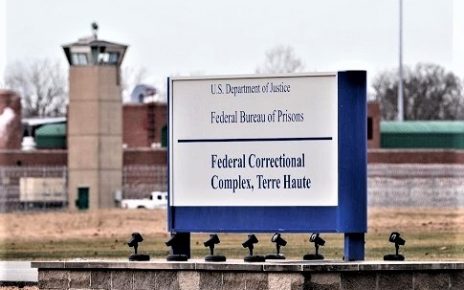By Wesley Bell

我們都知道改變是可怕的 – 就算我們知道需要改變,而且正在改變中。在我擔任聖路易郡檢察長即將滿3年的現在,我看到了這個變化,希望能和大家談談我在社區中所聽到的某些疑慮和擔憂。
正如我在競選時所提出的承諾,我就任後啟動了檢察官主導的「疏導專案」(Prosecutor-Led Diversion program),這個疏導專案對像是較低等級的非暴力犯罪案,針對那些在使用毒品、酒精、藥物、吸入劑等和心理健康問題上掙扎的人提供治療方案,而不是予以刑事起訴。然而隨著這個專案的實施,我聽到了有這樣的說法 – 那就是如果不起訴一些較低等級的非暴力犯罪會導致更嚴重的犯罪。但是,根據我所聘請的檢察長辦公室第一位數據分析師的數據表明,情況恰恰相反。
迄今為止,我們針對非暴力犯罪者的疏導專案對象近1,200名,截至2021年8月,參與疏導對象的再犯罪率低於8%,相比之下,全密蘇里州平均再犯罪率大約在45%左右,全國範圍內再犯罪率高達80%。明顯的可以看出,這個替代傳統起訴的疏導專案現在正在發揮效用並保護大眾。而從長遠來看,將會有更多的好處,因為成千上萬原本會深陷刑事司法系統的人,現在會有著平靜和有價值的生活。
我還聽到了社區的一些擔憂,誰才有資格作為疏導專案的對象? 任何犯罪涉及到受害人或是槍枝犯罪都不會成為我們的疏導專案對象,例如,入室盜竊或偷車就不是較低等級的犯罪,竊賊和偷車賊就不是疏導專案對象。事實上,我們正在與幾個地方警察部門建立一個專門處理偷劫車案件的工作組,並加強起訴這些罪犯。
我想解釋的是,這些疑慮不僅是基於對我們檢察長辦公室的誤解,還基於對犯罪本身的誤解。毫無疑問,與全國的犯罪趨勢類似,聖路易地區的某些暴力犯罪有所增加,我們應該關注並提出解決方案,但犯罪趨勢比我們所認知的犯罪波動要複雜的多。
根據美國聯邦調查局的數據,2020年聖路易郡的兇殺案、嚴重襲擊事件和車輛盜竊案有所增加。然而聖路易郡去年的強姦、搶劫、入室盜竊和一般盜竊案有所減少。
根據美國大部分城市的聯邦調查局初步數據,在全國範圍內,暴力犯罪類去年增加了3%,尤其是兇殺案有所增加,即使其他犯罪有所減少。兇殺案的增加似乎主要是由槍枝暴力增加所致,非營利槍枝暴力檔案(Gun Violence Archive)之報告指出,與前一年相比,2020年全國範圍內槍枝殺人案增加了近4,000起。
但是兇殺案並不是更廣泛犯罪波動的一部分,事實上,從竊盜到搶劫再到強姦,許多犯罪在新冠病毒疫情期間有所下降,並在2021年的前幾個月繼續下降,總體而言犯罪並沒有激增。
如果我們針對疫情期間的公共安全規定得到遵守,並且能夠越來越多的回歸更完全的社會生活,我們就有充分的理由希望犯罪減少。因為新冠病毒,許多支持、治療和預防計劃停止運作和發揮有限,人們陷入不安全的的環境,經濟壓力加大,這就追溯到我們當初疏導計畫的主要動機,許多人犯下輕微的罪行,因為他們得不到需要的幫助,而更多的疏導照顧應該反應出更少的犯罪。

最後,我想討論另一類犯罪,它不像是入室竊盜和汽車竊盜遭遇那樣令人恐懼,但是,卻是一個我們都可以在其中提供部分解決方案的日益嚴重問題,那就是聖路易郡的家庭暴力案件正在增加。平均而言,我們每個月收到105個家庭暴力移轉案件,高於2020年的每月88個移轉案件,和2019年每月74個移轉案件,說明了這一個趨勢。
每一個人都可以在解決家庭暴力問題上發揮作用,我們需要相互照顧、互相協助。如果你在一段關係中看到極度嫉妒、佔有欲、憤怒、辱罵、騷擾或極度控制行為的跡象,那就要注意了,這些都可能是虐待的跡象。如果你有家庭暴力實體證據,記錄下來並報警,或者是向檢察長辦公室舉報。
我們的辦公室一直非常積極的追訴虐待者的責任,同樣重要的是,與防範家庭暴力組織合作,提供家暴受害者需要的支援和幫助。我們必須讓受害人知道,他們是能夠得到幫助的。
我感謝聖路易郡的選民對我能夠帶來需要之改革的信任,我希望能夠說明解決一些因變革隨之而來的疑慮,我希望一些事實能夠澄清疑慮。
我請求您繼續的信任和支持,支持我們通過與執法部門合作,並聯繫接觸我們的社區各界(包括我們在亞太裔社區的朋友),繼續發展進化聖路易郡檢察長辦公室,來保護廣大社區大眾。讓我們盡一切努力,使這個地區成為一個更安全的地方。
本文作者 Wesley Bell 是聖路易郡檢察長,這是他當選聖路易郡檢察長後致力司法起訴改革兩篇文章中的第一篇。第二篇是 “司法起訴改革中保護社會大眾 (Protecting the public while reforming prosecution)“。英文原文請見聖路易時報網站。
Fear and facts about crime and prosecution
By Wesley Bell
Change, as we know, is scary – even when it’s change that we know we need and initiated ourselves. As I approach the end of my third year leading the St. Louis County Prosecuting Attorney’s office, I see this dynamic in action and wish to speak to some fears I have heard in the community.
As promised in my campaign for this office, I started a Prosecutor-Led Diversion program. This program reviews low-level, non-violent offenders, looking for those who are struggling with substance use or mental health issues. The appropriate candidates are offered a program of treatment rather than criminal prosecution. As this change has gone into effect, however, I have heard the claim that not prosecuting some low-level, non-violent crimes is leading to more serious crime. Our data – and I hired this office’s first data analyst – show that just the opposite is true.
Our diversion programs for non-violent offenders have accepted close to 1,200 participants to date, and the re-offense rate for our diversion participants was less than 8% as of August 2021. Compare that to statewide averages for recidivism that hover around 45% and go as high as 80% around the country, and it’s clear that these new alternatives to traditional prosecution are working and protecting the public right now – and will have more benefits in the long run as thousands of people who would have been mired in the criminal justice system are instead leading peaceful and productive lives.
I also have heard some fears in the community based on a misunderstanding of who does and does not qualify for our diversion programs. Any crime involving a victim or a firearm disqualifies the defendant from diversion. For example, we do not consider burglary or car theft to be low-level offenses. Accused burglars and car thieves do not qualify for diversion. In fact, we have directed more attention at prosecuting these crimes by creating a task force with several local police departments to focus on car break-ins.
The fears I want to address are not only based in misperceptions of our office but also misperceptions of crime itself. Without question, similar to trends across the country, the St. Louis region has seen an increase in certain violent crimes, and we all should be concerned and try to find our roles in offering solutions. But crime trends are more complex than the perception that we are engulfed in a crime wave.
In 2020, according to FBI data, St. Louis County saw an increase in homicide, aggravated assault, and vehicle theft. However, St. Louis County saw a decrease in rape, robbery, burglary, and general theft last year.
Nationally, the broader category of violent crime increased about 3% last year, according to preliminary FBI data from a large subset of American cities. It’s homicide in particular that has increased, even as other crimes fell. The homicide increase appears to be primarily driven by rising gun violence, with the nonprofit Gun Violence Archive reporting nearly 4,000 additional gun killings nationwide in 2020 compared with the year before.
But what’s happening with homicides is not part of some broader crime wave. In fact, many crimes, from larcenies to robberies to rape, dropped during the pandemic, and continued to fall during the first few months of 2021. Crime, overall, is not surging.
If our public safety protocols for the pandemic are observed and we are able to return increasingly to more fully social lives, we have one good reason to hope for less crime. With COVID, many support, treatment, and prevention programs halted operation or worked in a limited capacity. People were stuck in unsafe situations, and economic pressure increased. This goes back to a primary motivation for our diversion programs. Many people commit petty crimes because they need help that they are not getting. More treatment should be reflected in less crime.
I want to close by discussing a category of crime that does not strike fear the way burglary and car theft do, but is a growing problem where we can all provide part of the solution. St. Louis County is seeing an increase in domestic violence. On average, we are receiving 105 referrals per month for domestic violence, up from 88 referrals per month in 2020 and 74 referrals per month in 2019. We believe that increasing isolation in the home due to the pandemic, along with its economic impacts, mostly accounts for this trend.
Everyone can play a role in addressing domestic violence. We need to look out for one another and check in with another. If you see signs of extreme jealousy, possessiveness, anger, verbal abuse, harassment or extremely controlling behavior in a relationship, then say something. These are all possible indicators of abuse. If you see physical evidence of domestic assault, document it and call the police or our office.
Our office has been very proactive in holding abusers accountable and, just as importantly, in working with domestic violence advocates to connect victims of abuse to the resources and help they need. We must let victims know that they are not alone.
I thank St. Louis County voters for trusting me to bring needed change, and I wanted to address some of the fears that come with change. I hope some facts have brought some clarity – and I ask for your continued trust and support as we continue to evolve the St. Louis County Prosecuting Attorney’s office in ways that protect the public by working with law enforcement and reaching out to our community stakeholders (including our friends in the AAPI community). Let’s all do everything we can to make this region a safer place.
Wesley Bell is the St. Louis County Prosecuting Attorney.




